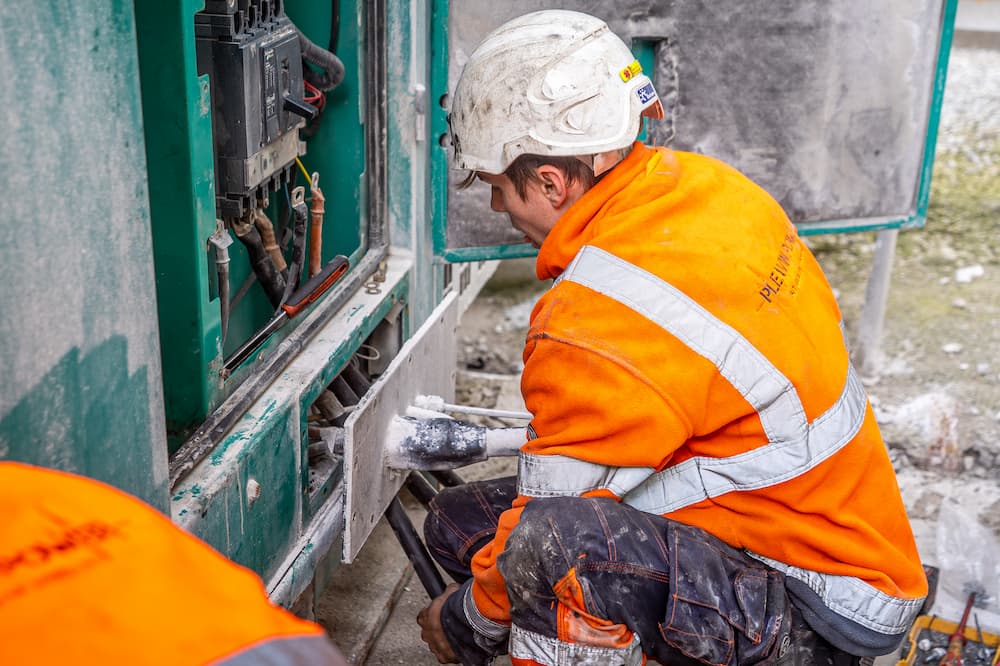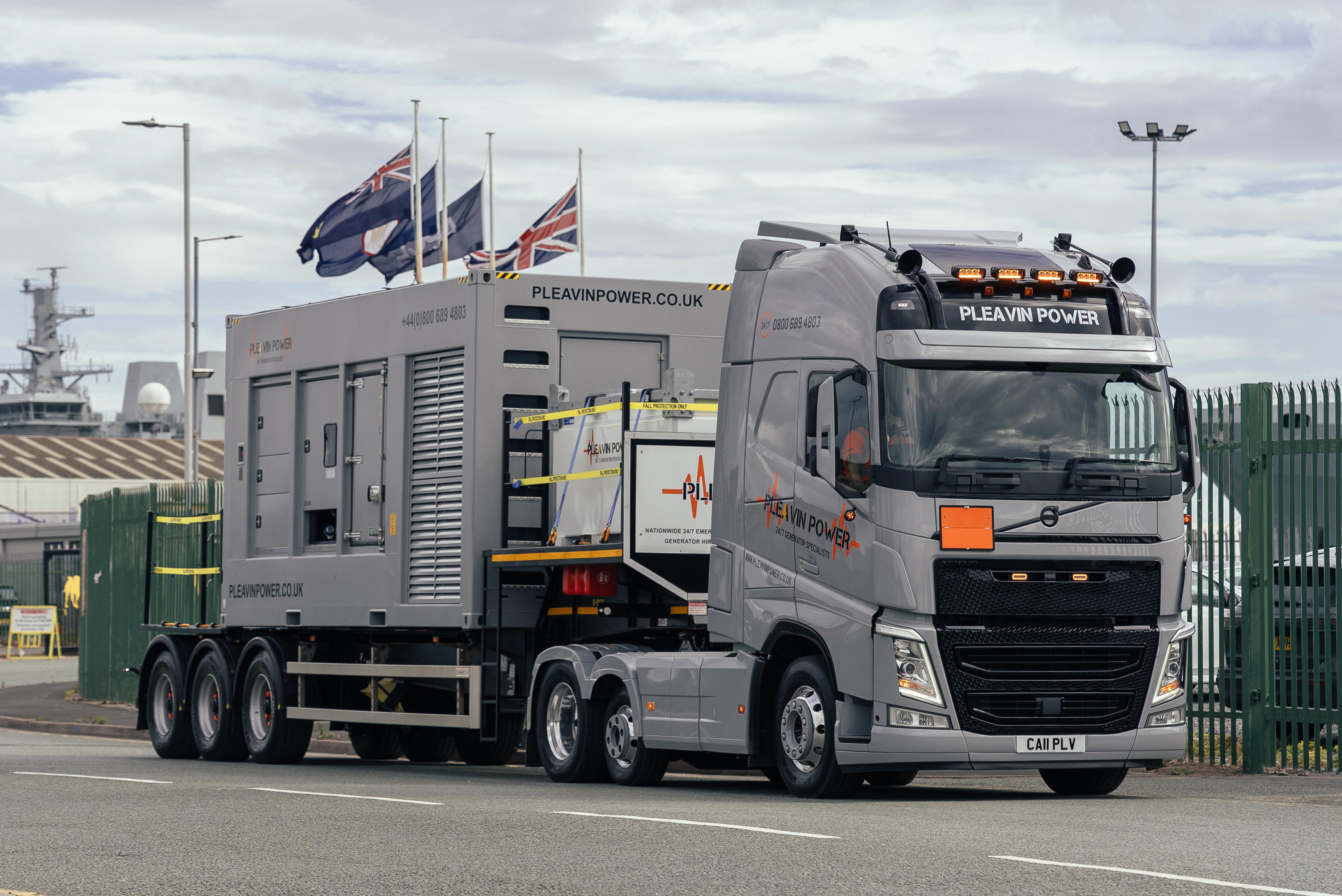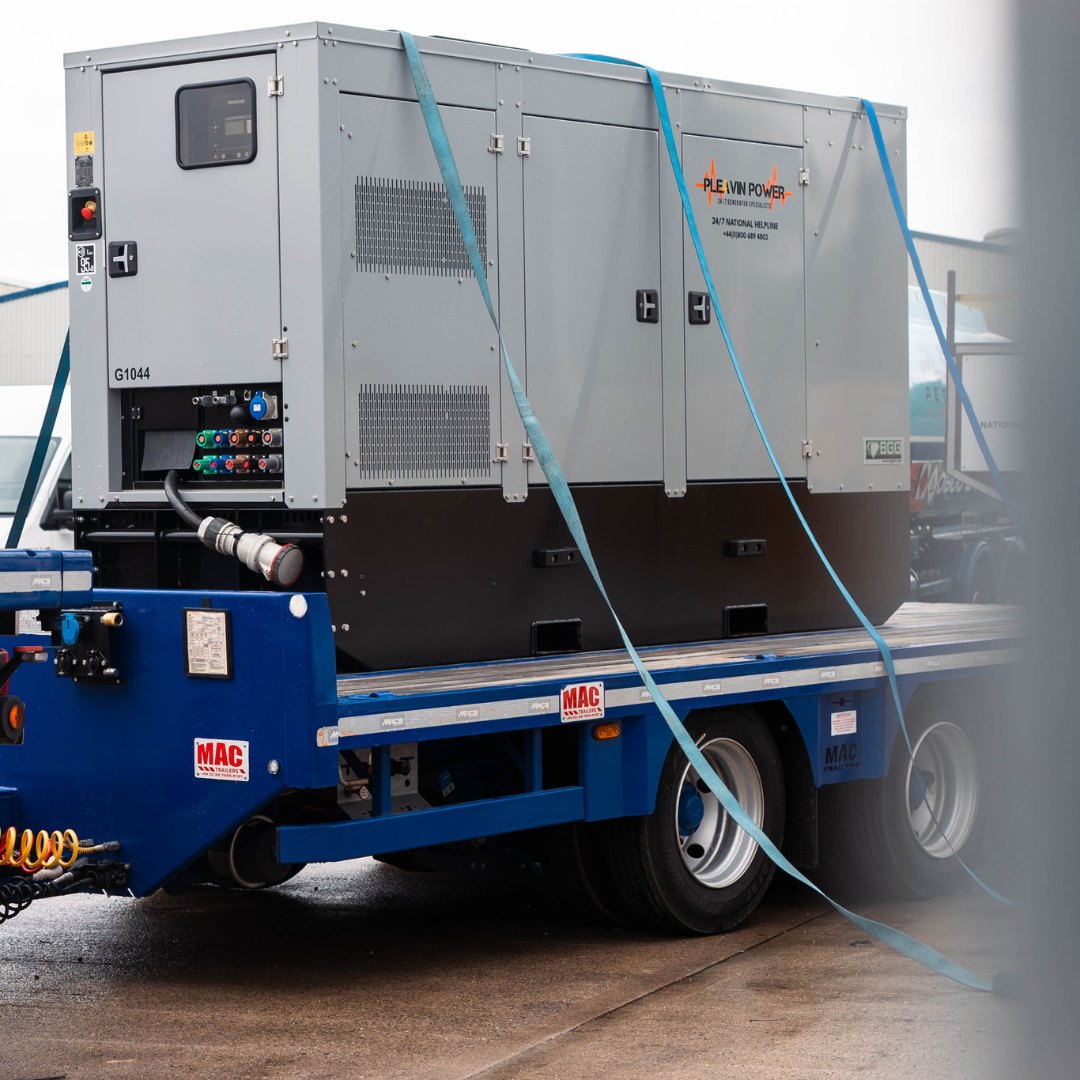In today’s always-on world, businesses simply can’t afford to grind to a halt. Any downtime can have expensive consequences, potentially damaging your company’s profits, productivity and its reputation too.
This is why unexpected power outages need to be avoided at all costs. The best way to plan for the worst is to invest in a backup power solution, such as a diesel generator or uninterruptible power supply (UPS) system. This can help your business stay powered up when it matters most.
Why Backup Power Still Matters for Keeping Business Going
Power cuts don’t discriminate – they can hit large enterprises and small startups alike.
Despite improvements to grid reliability, power disruptions are still common due to storms, infrastructure failures or energy supply issues.
In most companies, the majority of critical business functions are dependent on electricity, from servers and lighting to refrigeration, cooling systems and safety systems. This makes it extremely risky not to have a contingency plan in place.
What Downtime Really Costs Your Business
The true cost of downtime goes far beyond a temporarily dark office.
A report by Gartner found that the average cost of IT downtime is around £4,000 per minute for UK businesses.
For industries like healthcare, finance, and manufacturing, these losses can climb even higher. In manufacturing in particular, researchers have estimated that UK and EU firms will lose over £80 billion in 2025 due to manufacturing unplanned downtime.
Data loss, interrupted services, missed deadlines and customer dissatisfaction all have long-term consequences.
How Backup Power Helps You Stay One Step Ahead
Backup power systems, especially diesel generators and UPS systems, act like an insurance policy – ready to kick in the moment an outage strikes.
With a seamless switch to emergency power, your essential systems can keep running. This can also protect sensitive equipment and maintain productivity until mains power has been restored.
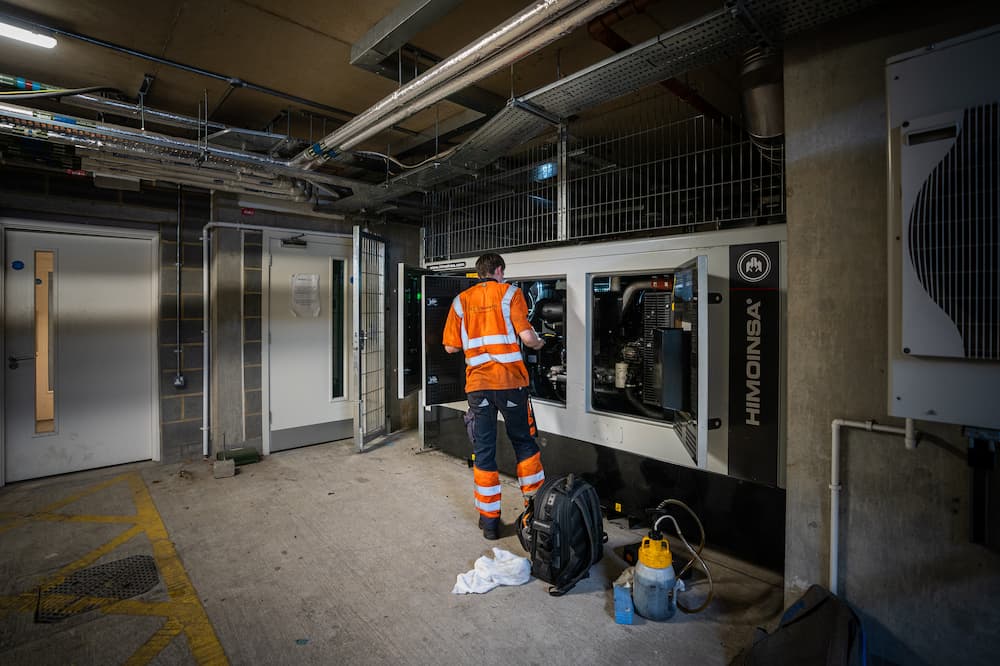
How Do Backup Generators Actually Work?
Understanding how backup generators function can help you figure out the best way to utilise them as part of your contingency plan.
So, how do backup generators work? Here’s a quick look of what happens during a power outage:
- When a power outage occurs, an automatic transfer switch (ATS) detects the disruption and signals the generator to start.
- The generator’s engine then converts fuel (usually diesel) into mechanical energy, which is transformed into electricity via an alternator.
- This electricity is then routed into the building’s circuits to power essential systems.
What’s Inside a Typical Generator Setup?
A commercial generator setup typically includes the following components:
- Engine – this is the heart of the unit, and is usually powered by diesel or gas
- Alternator – this converts mechanical energy to electricity
- Fuel system – this stores and supplies diesel fuel
- Cooling and exhaust systems – these keep the unit from overheating
- Control panel – this allows monitoring and control of the generator by the operator
- Battery charger – this ensures the system starts reliably when needed
- Automatic transfer switch (ATS) – this instantly switches the power source from the grid to the generator.
Each component plays a critical role in delivering reliable emergency power.
How Long Can You Count on a Backup Generator?
A common question we’re asked here at Pleavin Power is – how long do backup generators last?
The answer depends on a mix of usage patterns, maintenance and the type of generator.
Most high-quality diesel generators can deliver anywhere between 10,000 to 30,000 hours of use. This means years of reliable service if properly maintained.
What Affects How Long Your Generator Lasts
Several factors influence a generator’s lifespan:
- Usage frequency – more frequent use can mean faster wear
- Load levels – operating at maximum load constantly can shorten lifespan
- Maintenance – poorly maintained generators degrade quickly.
- Environmental conditions – exposure to extreme temperatures or dampness can accelerate wear.
Simple Ways to Make Your Generator Go the Distance
There are plenty of ways to get more value and life from your generator. Here are some tips to bear in mind:
- Stick to a regular maintenance schedule
- Store fuel correctly and check for contamination – consider fuel polishing if fuel has been stored for a long time before use
- Run monthly tests to ensure systems are working
- Keep the unit clean and sheltered from harsh conditions.
You could also look into reconditioning or overhauling your generator once it reaches a certain age or you notice a drop in performance. This can give it a fresh lease of life.
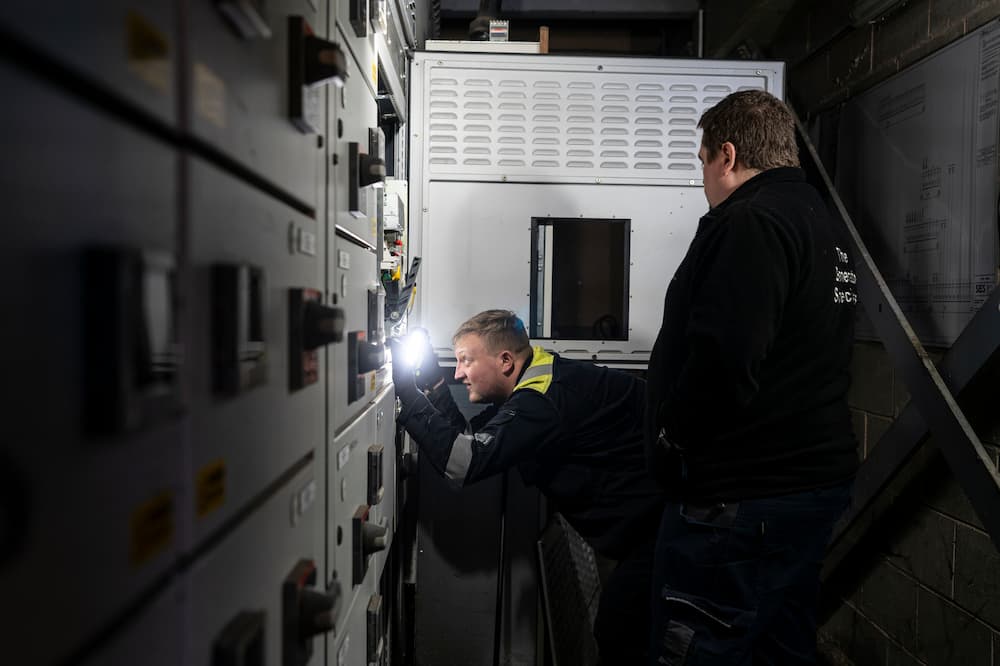
Real-World Examples Where Generators Make a Big Difference
Here are just a few of the many real-world case studies where backup power has saved the day.
1: Restoring Power to a Central London Research Facility
A multi-storey research facility in central London experienced a sudden power loss, jeopardizing ongoing experiments and operations. Pleavin Power swiftly responded by installing a temporary N+1 300kVA power system.
Despite logistical challenges (including navigating early morning London traffic and distributing equipment across five floors) the team were able to maintain an uninterrupted power supply, allowing the facility to continue its critical work without disruption.
2: Keeping a Waste Facility Running After Grid Failures
A 30MW energy-from-waste plant suffered repeated high-voltage cable failures, threatening to halt operations.
Pleavin Power stepped in within hours, deploying two transformer substations and synchronised generators to deliver reliable backup power. The rapid response kept the facility running and even provided long-term support while the supply was repaired, preventing major service disruptions.
3: Rapid Recovery for a Global Cloud Provider
A global cloud and streaming company faced a critical failure of their N+2 power system during maintenance, resulting in a main stator failure. Traditional repair options required costly crane operations to remove the generator.
Pleavin Power stepped in, first ensuring the site was supported with on-site backup generation. The team then devised an innovative solution by dismantling and removing the unit on-site using a telehandler, eliminating the need for crane hire. The generator was overhauled to OEM specifications and reinstalled within two weeks, ensuring minimal disruption and restoring full operational capacity.
These examples demonstrate just how vital backup power can be, across different industries and in a range of challenging and unpredictable situations.


